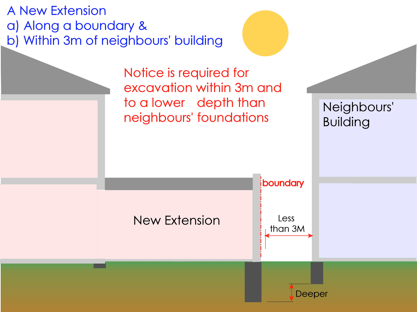The Party Wall etc. Act 1996 legislation should be adopted on all construction works to party walls as well as for extensions and new construction within 6.0m of the boundary (to a greater depth than existing building foundations) as well as works constructed up to /bridging the boundary of properties.
CP PARTY WALL SURVEYORS
Full-Service Solution
WHY CONSIDER A PARTY WALL SOLUTION?

If you are proposing to undertake works which are covered under the Party Wall etc. Act 1996 then it is a requirement that the formal Party Wall Notices are served to Adjoining owners.
Thereafter your Adjoining Owner will decide whether they wish to have a Party Wall Award (not the Building Owner)
The Adjoining Owner will not be charged for appointment of their surveyor or preparation of the Party wall Award.
Under the Party Wall etc. Act 1996 legislation this clearly and formally offers what is an equitable resolution to the vast majority of Party wall matters.
In appointing professional surveyors, they are able to review the proposed works associated with purely the Party Wall and resolve any technical matters associated with the works. Furthermore, if there is considered damage then the surveyors can review this and offer resolution to the damage.
Damage to the Party Wall as a result of the said works, specifically to the Adjoining Owner property, may be inspected and professional judgement offered to the Building Owner for technical resolution of the damage, without the Adjoining Owner needing to go to court to resolve.


